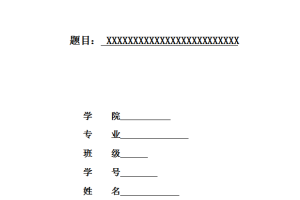摘 要:物流信用交易方式具有一定的金融信贷功能和资源整合功能,同时也具有提高物流运营效率;帮助客户解决资金问题;促进与客户长期合作;提高物流服务水平;扩大业务量等许多优点,更加符合新兴的现代物流商业模式对满足客户需求和加强客户关系的要求。因此,物流信用交易己经成为物流企业间竞争的主要手段。但由于这种行为主要依靠对物流需求者的信任和对未来付款的预期,所以一旦发生信用缺失行为,物流企业就会因预先提供服务、资金、设备或担保而蒙受损失。因此,物流企业信用交易运作的成功与否主要取决于其物流信用风险的防范。物流信用风险防范体系的建设,运用完善的评估和管理手段,不仅可以整合物流企业和个人的信用信息资源,而且能使物流信用交易发挥最大整体效益,减少经营风险的同时加快回款速度。因此高效的物流信用风险防范体系可以极大的提高物流企业竞争力,保障我国物流行业稳定、健康、持续的发展。
Abstract: Logistics credit transactions with certain financial and credit functions and resources integration, but also has improved the efficiency of logistics operations; help customers solve the funding problem; promote long-term cooperation with customers; improve logistics services; expansion of business, and many other advantages, more meet the emerging modern logistics business model to meet customer needs for strengthening customer relationships and requirements. Therefore, the logistics of credit transactions have become the primary means of competition between logistics enterprises. But because this behavior is mainly relying on the trust ‘s logistics needs and expectations of future payments, so once the lack of credit behavior , logistics companies will be due in advance of service, funds, equipment, or loss guarantees. Therefore, the success of the logistics business credit trading operations is largely dependent on the credit risk of its logistics guard. Construction logistics credit risk prevention system, improve the use of evaluation and management tools, not only to integrate the logistics business and personal credit information resources and logistics to make credit transactions to maximize the overall effectiveness, reduce operating risk while accelerating reimbursement rate. Therefore, efficient logistics credit risk prevention system can greatly improve the competitiveness of logistics enterprises, protection of China’s logistics industry stable, healthy and sustainable development.
Keywords: credit; logistics credit transactions; logistics credit risk; risk prevention
目 录
第一章 前言………………………………………………………………………………………………. – 1 –
1.1 研究的目的及意义……………………………………………………………………….. – 1 –
1.1.1本文研究的理论意义……………………………………………………………. – 1 –
1.1.2本文研究的实用价值……………………………………………………………. – 1 –
1.2物流信用国内外研究现状………………………………………………………………. – 1 –
1.2.1国外研究现状………………………………………………………………………. – 1 –
1.2.2国内研究现状………………………………………………………………………. – 2 –
1.3本文要解决的问题…………………………………………………………………………. – 3 –
第二章 物流信用风险分析…………………………………………………………………………. – 3 –
2.1物流信用风险综述…………………………………………………………………………. – 3 –
2.1.1风险的定义………………………………………………………………………… – 3 –
2.1.2信用风险的内涵…………………………………………………………………. – 4 –
2.1.3物流信用风险的内涵………………………………………………………….. – 4 –
2.2物流信用风险的特征……………………………………………………………………… – 5 –
2.2.1物流服务产品质量难以控制……………………………………………….. – 5 –
2.2.2物流服务交易中的赊销期加长……………………………………………. – 5 –
2.2.3物流信用风险涉及面广………………………………………………………. – 5 –
2.2.4客户资信状况无法及时了解……………………………………………….. – 5 –
2.3物流信用风险的分类……………………………………………………………………… – 6 –
2.3.1物流投资风险…………………………………………………………………….. – 6 –
2.3.2物流信息风险…………………………………………………………………….. – 6 –
2.3.3物流资金风险…………………………………………………………………….. – 7 –
第三章 我国物流信用风险分析………………………………………………………………….. – 7 –
3.1物流信用风险的原因……………………………………………………………………… – 7 –
3.1.1交易双方信用信息不对称…………………………………………………… – 7 –
3.1.2信用交易机制体制不健全…………………………………………………… – 8 –
3.2物流信用风险的表现……………………………………………………………………… – 8 –
3.2.1 物流行业的风险………………………………………………………………… – 8 –
3.2.2物流行业风险防范环境尚未成熟………………………………………… – 9 –
第四章 防范物流企业信用风险的策略……………………………………………………….. – 9 –
4.1评价企业可接受风险的水平…………………………………………………………… – 9 –
4.2设定客户信用标准……………………………………………………………………….. – 10 –
4.3制定信用制度………………………………………………………………………………. – 10 –
第五章 结束语…………………………………………………………………………………………. – 12 –
参考文献………………………………………………………………………………………………….. – 13 –
致 谢……………………………………………………………………………………………………… – 14 –





